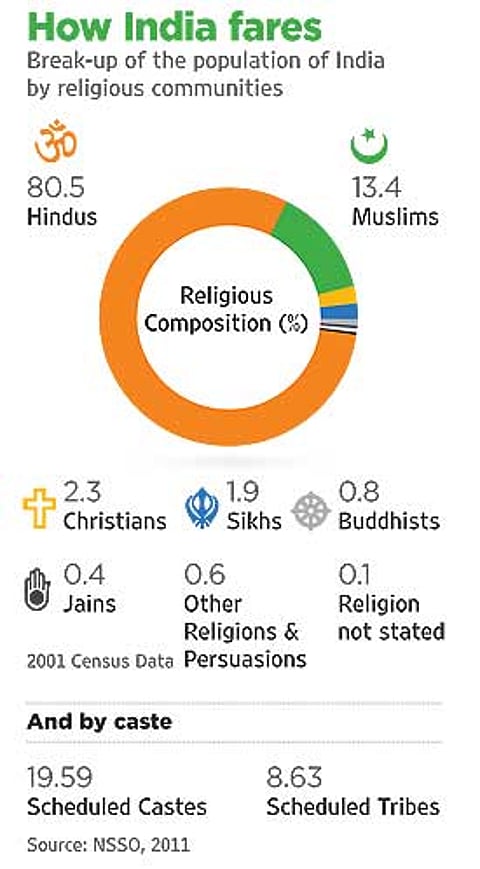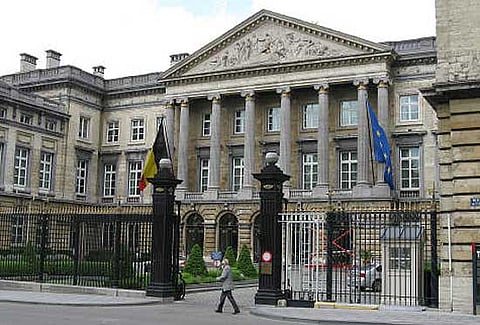Majoritarianism is an ironic fallout of democracy in which the numerically dominant impose themselves on smaller groups, demanding a falling in line. A historical walkthrough of how it has made appearances in idea and practice....
Overwhelming Down The Ages
A historical walkthrough of how majoritarianism has made appearances in idea and practice....
18th Century

- From the time of classical Greek philosophers and through the 18th century, including the beliefs of the founders of the US such as James Madison, majoritarianism has had a pejorative connotation.
- It was routinely presumed that the majority of the population was poor and ignorant. It was also presumed that the majority, if given the power and opportunity to do so, would tyrannise over any and all minorities.

- French historian and political scientist Alexis de Tocqueville coined the phrase “tyranny of the majority”.
- Starting in the 18th century, the idea of a ‘majority’ also began to receive a positive defence. To begin with, it was argued that any individual or group less than the majority was quite capable of tyranny. In the movement towards a more democratic polity, reference to the ‘majority’ was seen as “the right way” to order a society’s affairs.

- This view was pushed by French philosophers Jean-Jacques Rousseau and the Marquis de Condorcet, who believed that thanks to proper education, anyone (and not just a chosen minority) could be capable of determining the common good.
- In the 18th century Polish parliament, voting had to be unanimous before any course of action could be undertaken. Each Polish aristocrat could cast what was known as the liberum veto. It didn’t work—Poland was carved up between Germany, Russia, Austria-Hungary.
1969
- Majoritarianism has often been used as a pretext by sizeable minorities to politically oppress other smaller minorities, or even sometimes a civically inactive majority (in a famous speech about Vietnam delivered in 1969, US President Richard Nixon said, “And so tonight—to you, the great silent majority of my fellow Americans—I ask for your support.”)
- Majoritarian regimes have generally not been stable. New Zealand (before 1996) and the UK are often cited as the only working examples. In contrast, consensus democracies are “kinder” and “gentler” because they are more likely to (1) be welfare states, (2) take care of the environment, (3) imprison fewer people, (4) eschew the death penalty, and (5) provide generous foreign aid.
2005
- “This is something tremendous, this is something unbelievable. We’re talking above all about an idea of democracy that isn’t about majority rule, an idea of democracy that is about minority rights and group rights, and above all about individual human rights.”—Iraqi academic Kanan Makiya, discussing a post-governance plan for Iraq
Sources: Encyclopaedia Britannica; Patterns of Democracy by Arend Lijphart; Trevor Pateman on Majoritarianism; and other readings.
How India Fares
Break-up of the population of India by religious communities

Two Contrasting Case Studies Sri Lanka And Belgium

Sri Lanka: This diverse country (74 per cent of the population is Sinhalese and 18 per cent are Tamil speakers) paid the price for majoritarianism. Measures taken by the Sinhala majority community—through a democratically elected government— after the country gained independence in 1948:
- Act passed in 1956 to recognise Sinhala as the only official language.
- University positions and government jobs favoured Sinhalese population.
- While most of the Tamils are Hindus and Muslim, the Sinhalese are Buddhist, Christians.
- This led to a feeling among the Tamils that they were being discriminated and led to a massive, decades-long civil war that has set the country back on numerous parameters.

Belgium: This diverse and affluent country has lived with territorial strife throughout the 20th century. Typically, the Fleming region would be pitted against the Walloon region (with a small German region as a bystander). Violent protests were evident during the 1950s, ’60s, and ’70s. But eventually, this petered out. How?
- The number of Dutch and French-speaking ministers will be equal in the government.
- No single community can make decisions that override other communities.
- The state governments have been given many powers over the central government.
- As a third leg of governance, Belgium has a “community government” that has power over cultural, educational and issues related to language.
Ten Criteria To Define Majoritarian Regimes…
(...and ten contrasting characteristics of consensus democracies)
- Executive power in single majority cabinets
(Executive power-sharing in broad multi-party coalitions) - Executive-legislative relationships in which the executive is dominant
(Executive-legislative balance of power) - Two-party systems
(Multi-party systems) - Majoritarian and disproportional electoral systems
(Proportional representation) - Many interest groups existing with free-for-all competition within groups
(“Corporatist” interest group systems aimed at compromise and concentration.) - Unitary and centralised government
(Federal and decentralised government) - Concentration of power in unicameral legislature
(Division of legislative power between two equally strong but differently constituted houses) - Rigid constitutions that can be amended only by super-majorities.
(Flexible constitutions that can be amended by simple majorities) - Systems in which the legislature has the final word on the constitutionality of their own legislation
(Systems in which the laws are subject to a judicial review of their constitutionality by supreme courts) - Central banks that are dependent on the legislature
(Independent central banks.)
Tags